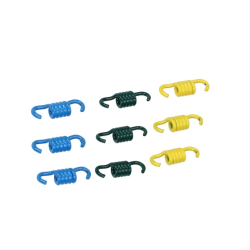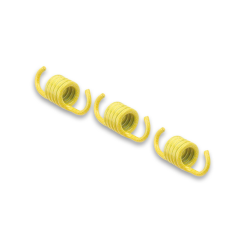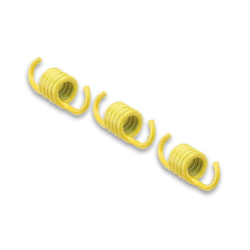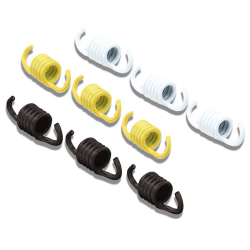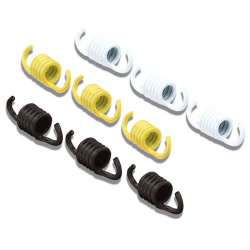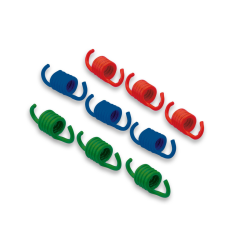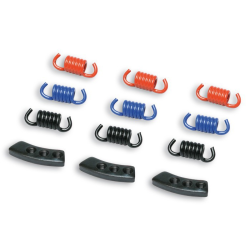The best scooter shop in 2025
Tension springs
Trekveerset Geel Malossi Delta / Fly Koppeling
Trekveerset Malossi Geel Piaggio, GY6 & Peugeot
Trekveerset Malossi Geel/Wit/Zwart Piaggio
Set pulling springs Citta/Si/Ciao malossi
Trekveerset UNI 1000TPM Peugeot / Kymco / piaggio
Trekveerset Malossi Clutch RACE
What does a clutch spring do in a scooter?
Clutch springs in a scooter are located in the clutch and determine when the clutch segments engage. This happens when the engine's RPMs are high enough. The clutch springs ensure that the clutch only makes contact with the clutch drum at the right moment, which transfers the engine's power to the rear wheel. This allows your scooter to accelerate smoothly. Heavier clutch springs ensure that the clutch engages later (at higher RPMs), while lighter springs cause an earlier clutch engagement.
What if you have too tight clutch springs?
If you have too tight clutch springs in your scooter, the clutch will only engage at a much higher RPM. This can lead to slower or jerky acceleration, as the engine must first rev more before the scooter actually starts moving. Although this can be useful for sporty driving, it can lead to unnecessary wear and tear on the engine and clutch in everyday use. Moreover, fuel consumption may increase because the engine has to work harder before the scooter starts moving.
Which clutch springs for my scooter?
The choice of the right clutch springs depends on the type of scooter and your driving style. For standard scooters that are mainly used in the city, medium clutch springs are usually the best option. These provide a good balance between smooth acceleration and efficient fuel consumption. If you want to improve your scooter's performance, such as faster acceleration, you can opt for heavier clutch springs. However, keep in mind that this also affects ride comfort and the wear and tear of other parts. It's important to choose the right clutch springs that match the setup of the variator and other drive components of your scooter.

 Nederlands
Nederlands